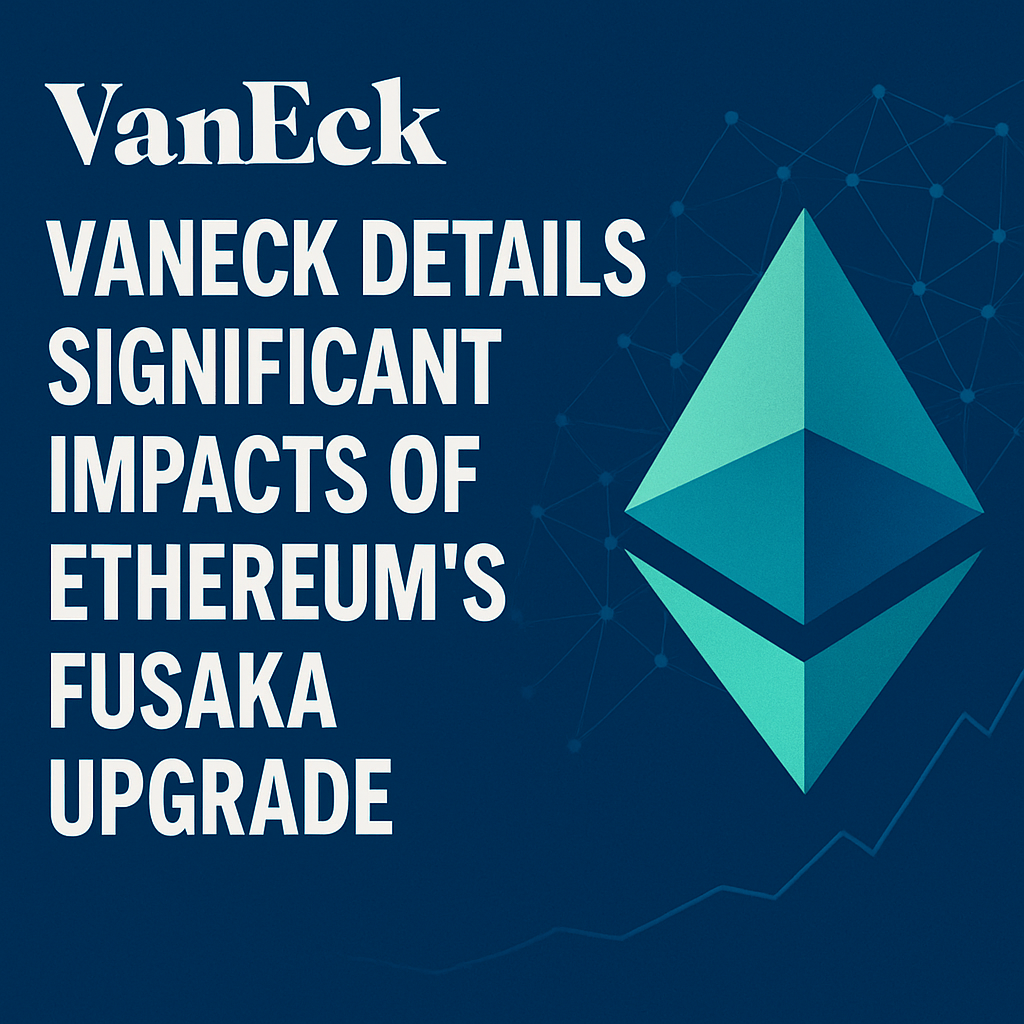Overview
VanEck’s research team has published an analysis on Ethereum’s Fusaka network upgrade, scheduled for December 2025. The upgrade is designed to address one of Ethereum’s most pressing challenges: data availability for rollups.
Peer Data Availability Sampling (PeerDAS)
At the heart of the Fusaka upgrade is PeerDAS, a protocol enabling validators to sample subsets of block data rather than downloading every transaction. This approach reduces bandwidth and storage requirements, allowing Ethereum to safely increase “blob” capacity and support high-throughput rollups without compromising decentralization.
Impact on Layer-2 Ecosystem
Rollups such as Coinbase’s Base and Worldcoin’s World Chain currently account for roughly 60% of Ethereum’s rollup data usage. By improving data availability efficiency, Fusaka is expected to lower transaction costs on these networks, fostering greater adoption and innovation in layer-2 applications.
ETH as Monetary Asset
VanEck argues that as more activity shifts off-chain, Ethereum’s mainnet fee revenue will decline. However, ETH’s security role in finalizing rollup transactions becomes more prominent, reinforcing the token’s status as a store of value and unit of account in decentralized finance.
Institutional Adoption
The analysis cautions that institutional stakers should consider dilution risks as ETH issuance dynamics evolve post-upgrade. Nevertheless, lower layer-2 fees and stronger network throughput could attract treasury operations, exchange-traded products and corporate treasuries to hold and stake ETH.
Key Takeaways
- PeerDAS enables scalable rollup data sampling.
- Fusaka will reduce layer-2 transaction costs.
- ETH’s security role is strengthened in a rollup-centric future.
- Institutional ETH demand may rise despite issuance changes.
Conclusion
Fusaka represents a pivotal technical advancement for Ethereum’s scalability roadmap. By balancing validator efficiency, data availability and network security, the upgrade aims to support the next generation of decentralized applications and institutional adoption.

Comments (0)